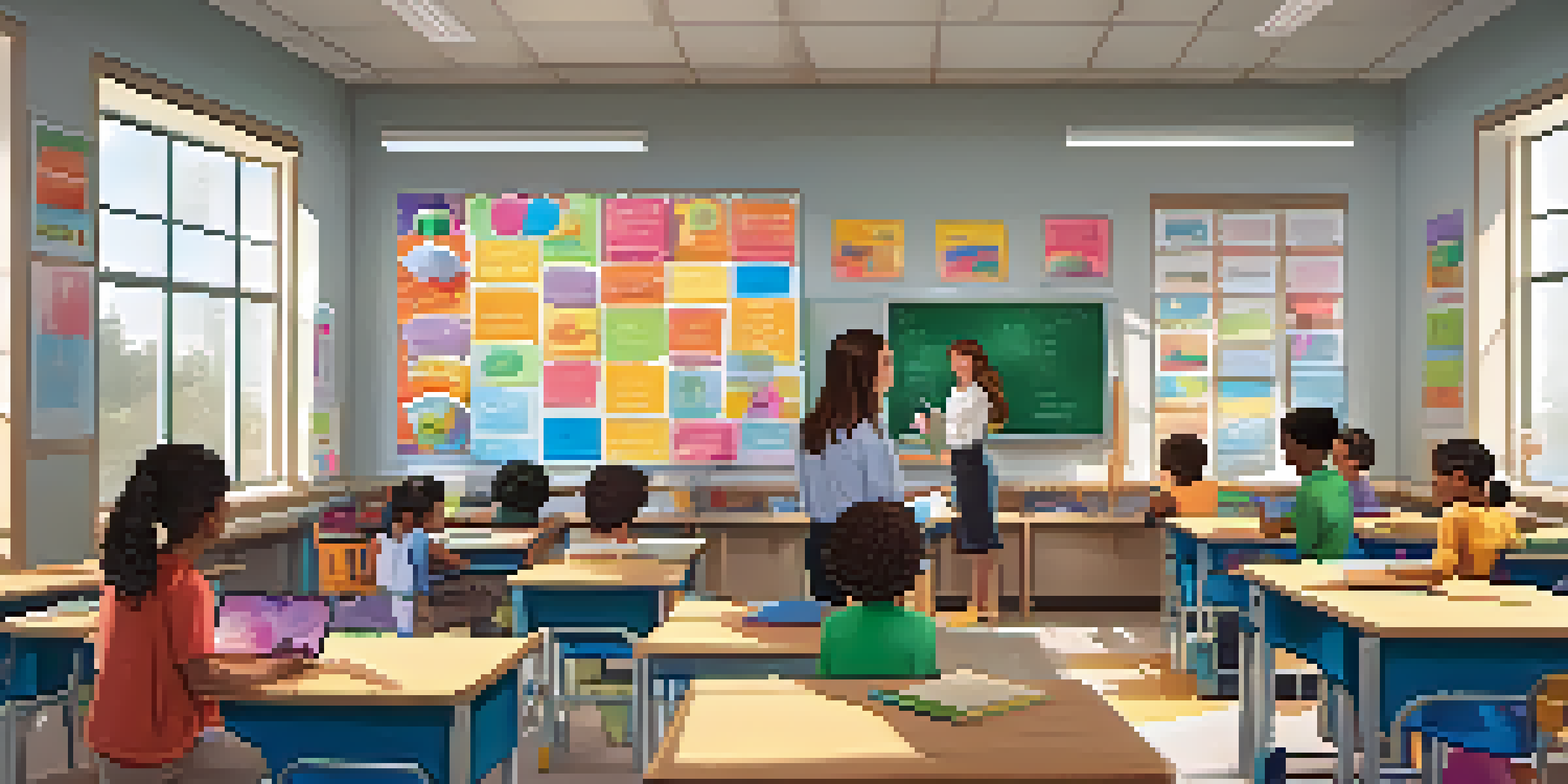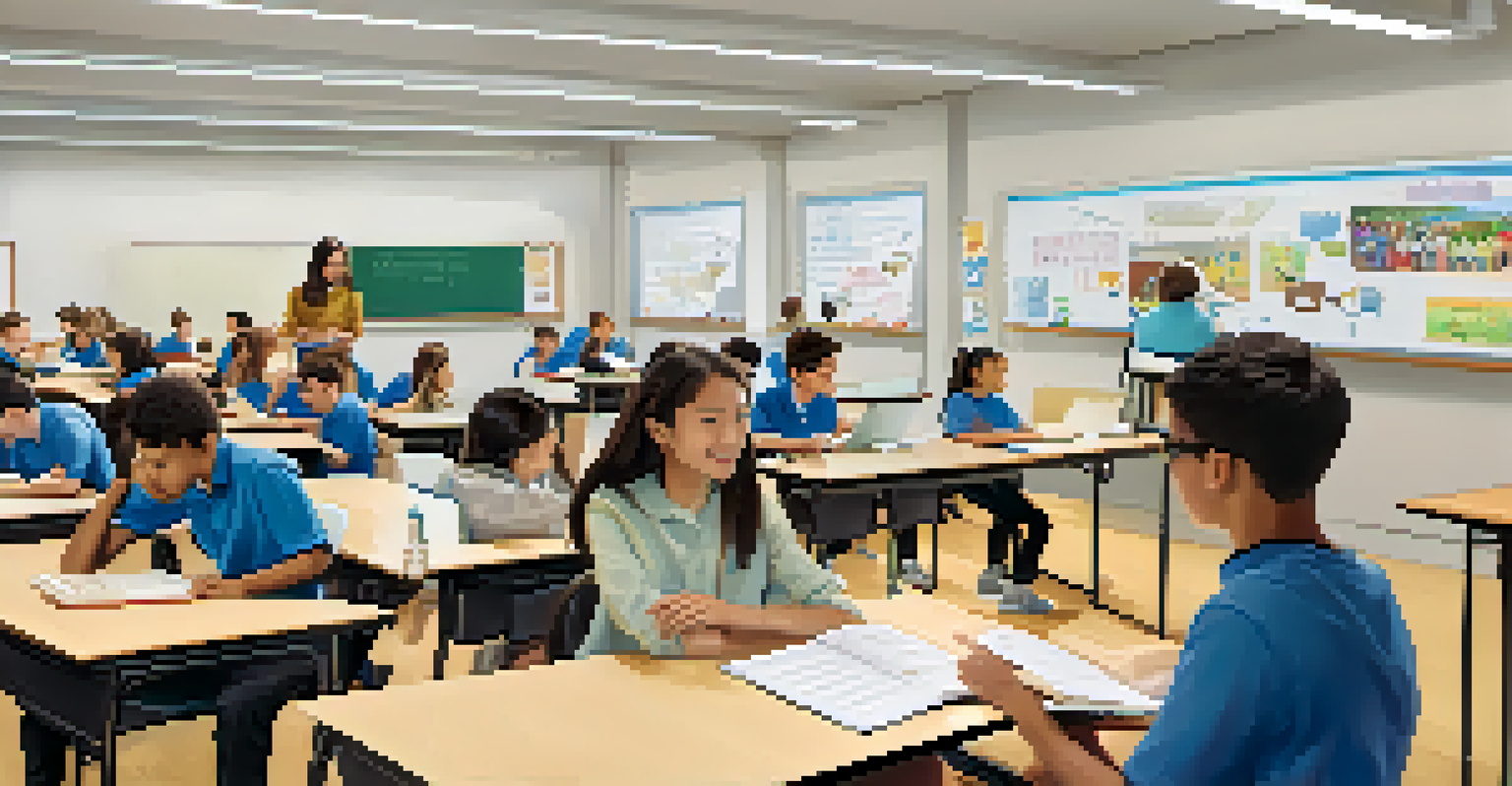Adaptive Learning vs. Traditional Learning: A Comparative Study

Understanding Adaptive Learning: A New Approach
Adaptive learning is a personalized educational approach that uses technology to tailor lessons to each learner's needs. Unlike traditional methods, it dynamically adjusts the content based on a student's performance and understanding. Think of it as a GPS for education, guiding students along their unique learning paths.
Education is the most powerful weapon which you can use to change the world.
This method collects data on how students interact with the material, allowing educators to identify strengths and weaknesses effectively. As a result, learners can progress at their own pace, ensuring that they grasp concepts thoroughly before moving on. This flexibility can lead to a deeper understanding of the subject matter.
Moreover, adaptive learning environments often incorporate engaging multimedia and interactive elements, keeping students motivated and focused. In a world where attention spans are shrinking, this approach can make learning feel less like a chore and more like an exciting journey.
Traditional Learning: The Time-Tested Method
Traditional learning relies on a one-size-fits-all model, where students are taught in a standardized manner, often in classrooms with fixed curricula. This method has been the backbone of education for centuries, emphasizing teacher-led instruction and uniform assessments. While it has its merits, it may not address individual learning differences effectively.

In this setting, students often move through lessons at the same pace, which can leave some behind while others may feel bored. The emphasis is typically on memorization and rote learning, which can stifle creativity and critical thinking. Picture a factory assembly line—efficient, but lacking in personalization.
Adaptive Learning Personalizes Education
This approach tailors lessons to individual student needs, enhancing engagement and understanding.
However, traditional learning offers structure and familiarity that many students value. It provides a clear framework for education, ensuring that essential topics are covered thoroughly, which can be reassuring for both students and parents alike. For some, this predictability is exactly what they need to thrive.
Key Differences: Customization vs. Standardization
At the heart of the debate between adaptive and traditional learning lies the difference in customization. Adaptive learning seeks to personalize the educational experience, while traditional learning adheres to a standardized approach. This fundamental distinction shapes how students engage with the material and ultimately their learning outcomes.
The beautiful thing about learning is that no one can take it away from you.
In adaptive learning, the curriculum is fluid, adjusting to meet the learner's needs, which can enhance motivation and retention. In contrast, traditional learning's rigidity can lead to frustration for those who struggle to keep pace with their peers. Imagine trying to fit into clothes that are too small—it's uncomfortable and stifling.
This customization in adaptive learning not only empowers students but also allows teachers to focus their efforts where they're needed most. By understanding individual learning styles, educators can deliver targeted support, creating a more inclusive environment that fosters growth and success for all learners.
Technology's Role in Adaptive Learning
Technology plays a pivotal role in the success of adaptive learning systems. With the use of algorithms and data analytics, these platforms can assess student performance in real-time, making instantaneous adjustments to the content provided. This level of responsiveness was unimaginable in traditional learning environments, where feedback often comes too late.
Interactive platforms, online assessments, and multimedia resources are hallmarks of adaptive learning technology, allowing for a richer educational experience. Students can access a wealth of information and tools at their fingertips, promoting self-directed learning. Think of it as having an entire library and a tutor available 24/7.
Technology Enhances Learning Flexibility
Through real-time data analytics, adaptive learning platforms can adjust content dynamically for better student outcomes.
However, this reliance on technology also raises questions about accessibility and equity in education. Not all students have equal access to devices or high-speed internet, which can create disparities in learning opportunities. As we embrace adaptive learning, it's crucial to ensure that technology enhances education for everyone, not just a select few.
The Importance of Teacher Involvement
Despite the high-tech nature of adaptive learning, the role of the teacher remains vital. Educators are not just facilitators but also guides who help students navigate their personalized learning experiences. In adaptive learning environments, teachers can focus more on mentoring and providing support rather than merely delivering information.
Teachers can utilize the data collected by adaptive learning systems to identify trends and tailor their instruction accordingly. This allows for a more nuanced understanding of each student’s needs, fostering a supportive atmosphere that encourages growth. It's like a coach adjusting a game plan based on the players' strengths and weaknesses.
In traditional learning, teachers often have to juggle large classrooms and standardized testing, which can limit their ability to cater to individual student needs. By integrating adaptive learning, educators can reclaim their roles as champions of their students' unique journeys, making education more impactful and meaningful.
Challenges and Criticisms of Adaptive Learning
While adaptive learning offers many advantages, it’s not without its challenges. One common criticism is the potential over-reliance on technology, which can lead to a disconnect between students and teachers. If not implemented thoughtfully, it might create an isolating experience rather than fostering collaboration and engagement.
Additionally, the effectiveness of adaptive learning can vary significantly depending on the quality of the platform and its content. Poorly designed systems may fail to meet students' needs or may not provide adequate support for teachers. Think of it like a poorly written book—no matter how engaging the cover looks, the content must deliver.
Teacher Involvement is Crucial
Educators play a vital role in guiding students through personalized learning experiences, fostering growth and support.
Moreover, there are concerns about data privacy and security with adaptive learning systems. As these platforms collect sensitive information about students, safeguarding this data becomes paramount. Striking a balance between personalization and privacy is a critical consideration for educators and developers alike.
The Future of Learning: A Blended Approach
As we look ahead, the most promising educational strategies may lie in blending adaptive and traditional learning methods. This hybrid approach allows for the structure and familiarity of traditional education while incorporating the personalization and flexibility of adaptive systems. By combining the best of both worlds, we can create a more holistic learning experience.
In a blended environment, students can benefit from direct instruction and collaborative activities while also enjoying adaptive resources tailored to their unique needs. This approach not only supports diverse learning styles but also fosters a sense of community among students. Imagine a potluck dinner where everyone brings their favorite dish—each contribution enriches the overall experience.

Ultimately, the goal is to create an education system that prepares students for the complexities of the real world. By embracing both adaptive and traditional learning methods, we can equip learners with the skills and knowledge necessary to thrive in an ever-evolving landscape. The future of education is bright, and it’s all about finding the right balance.